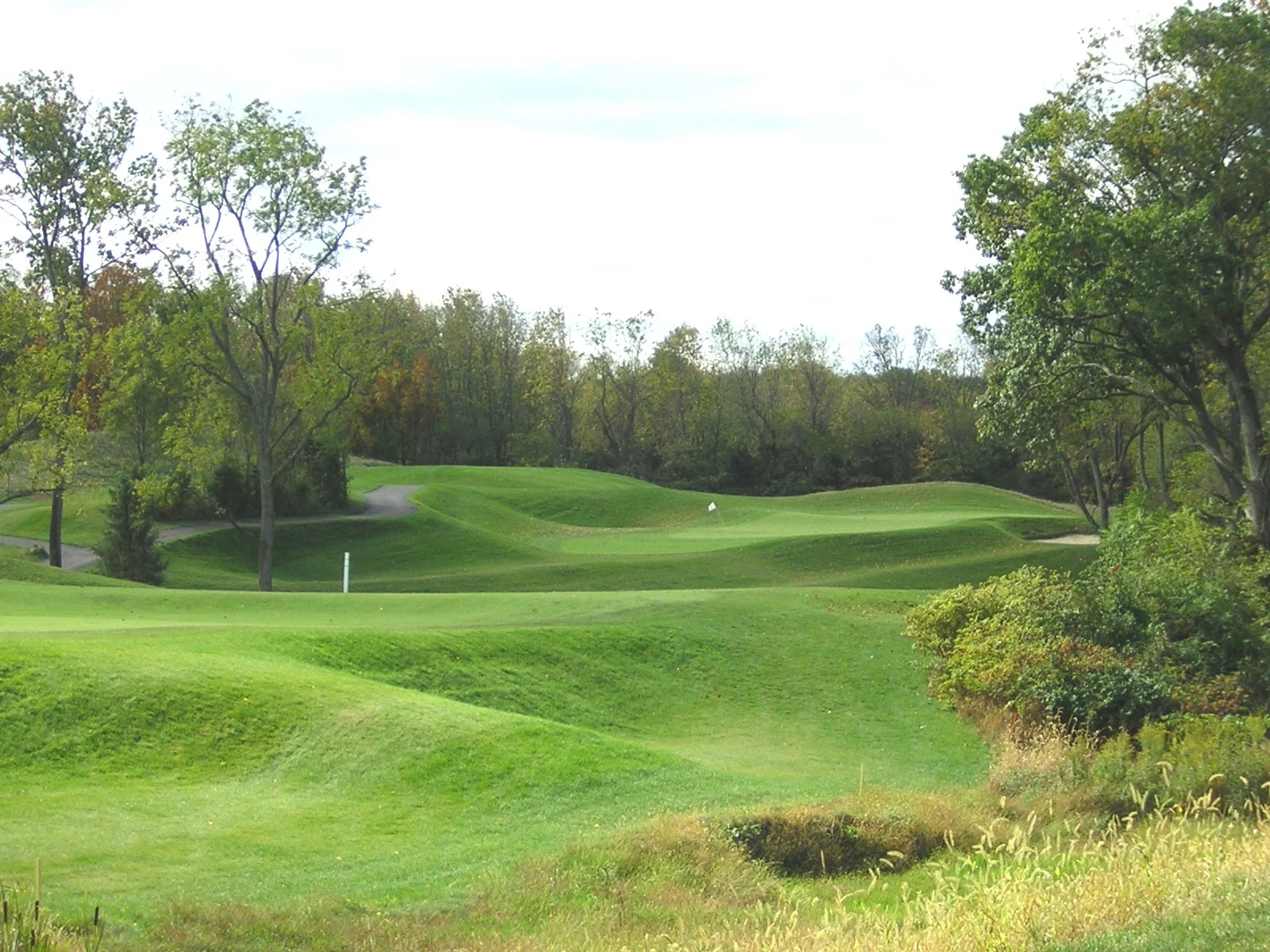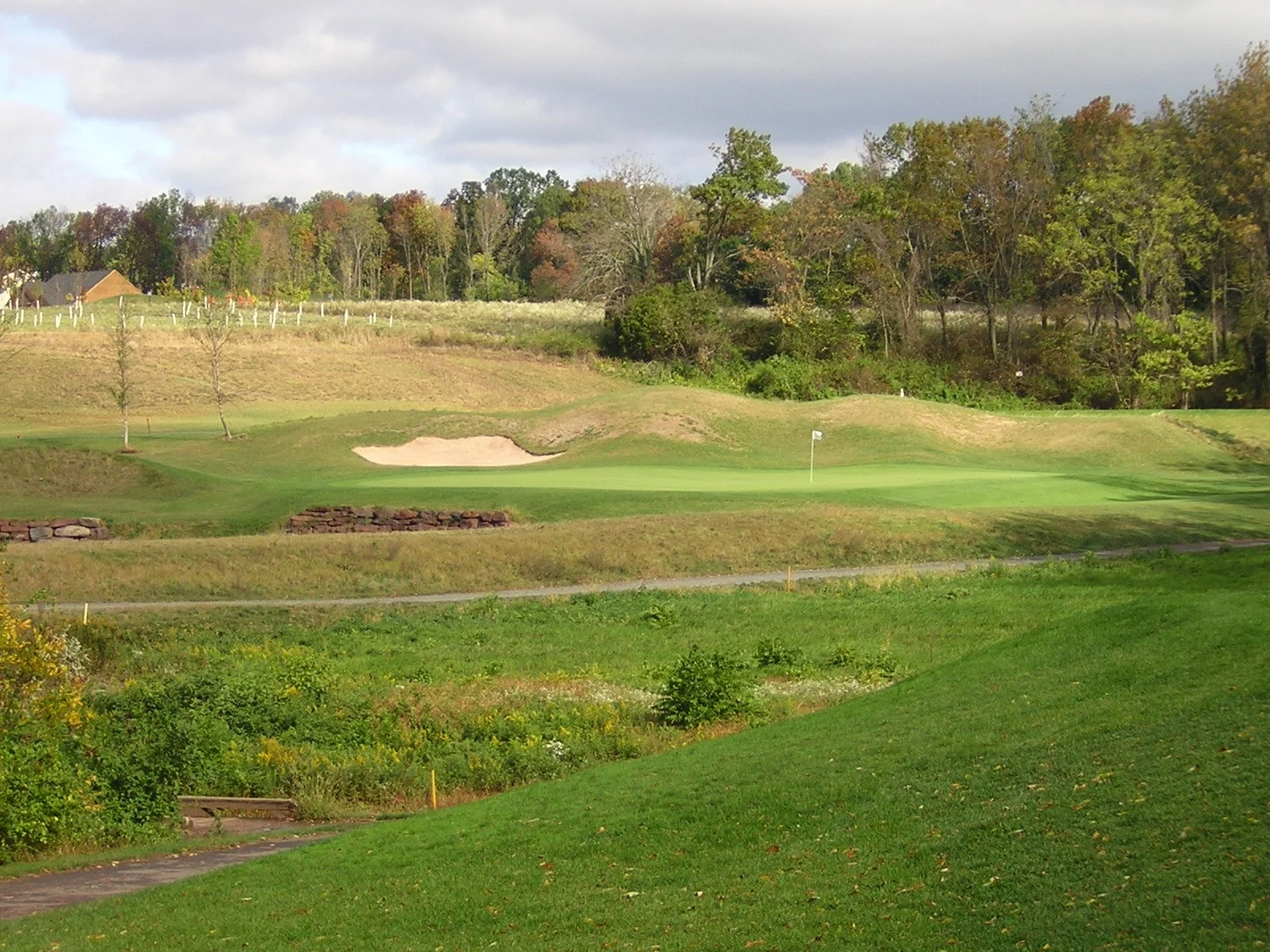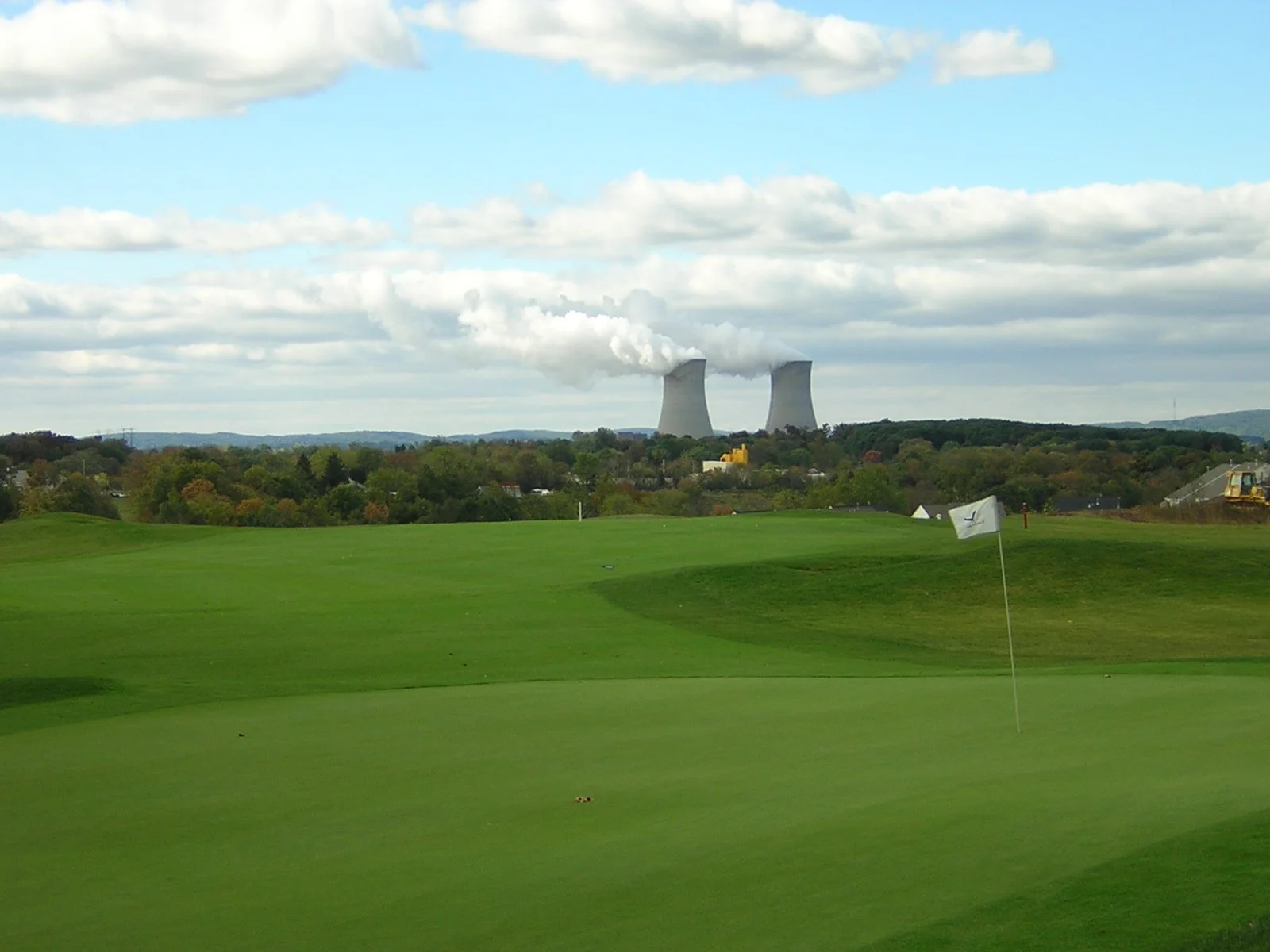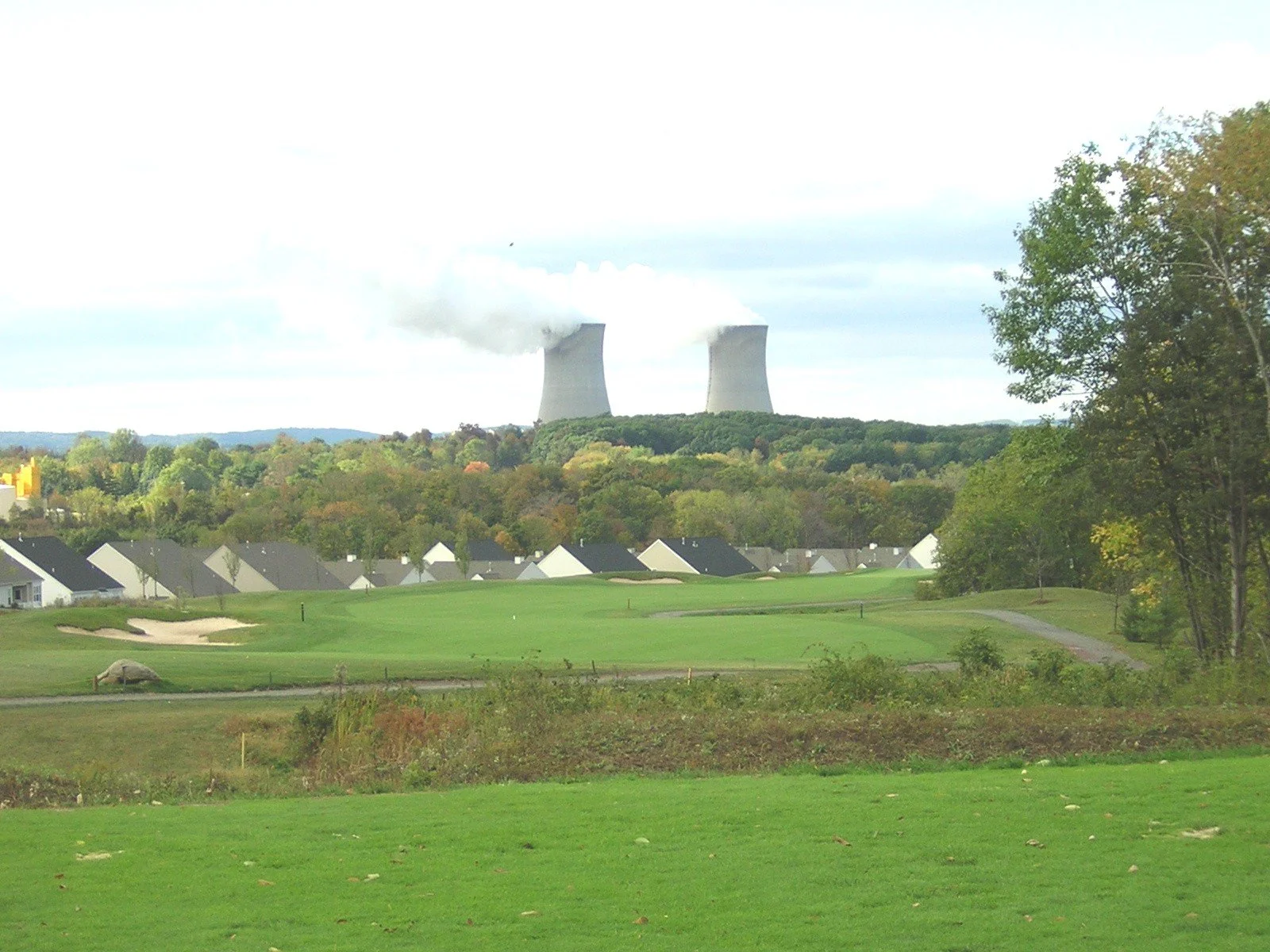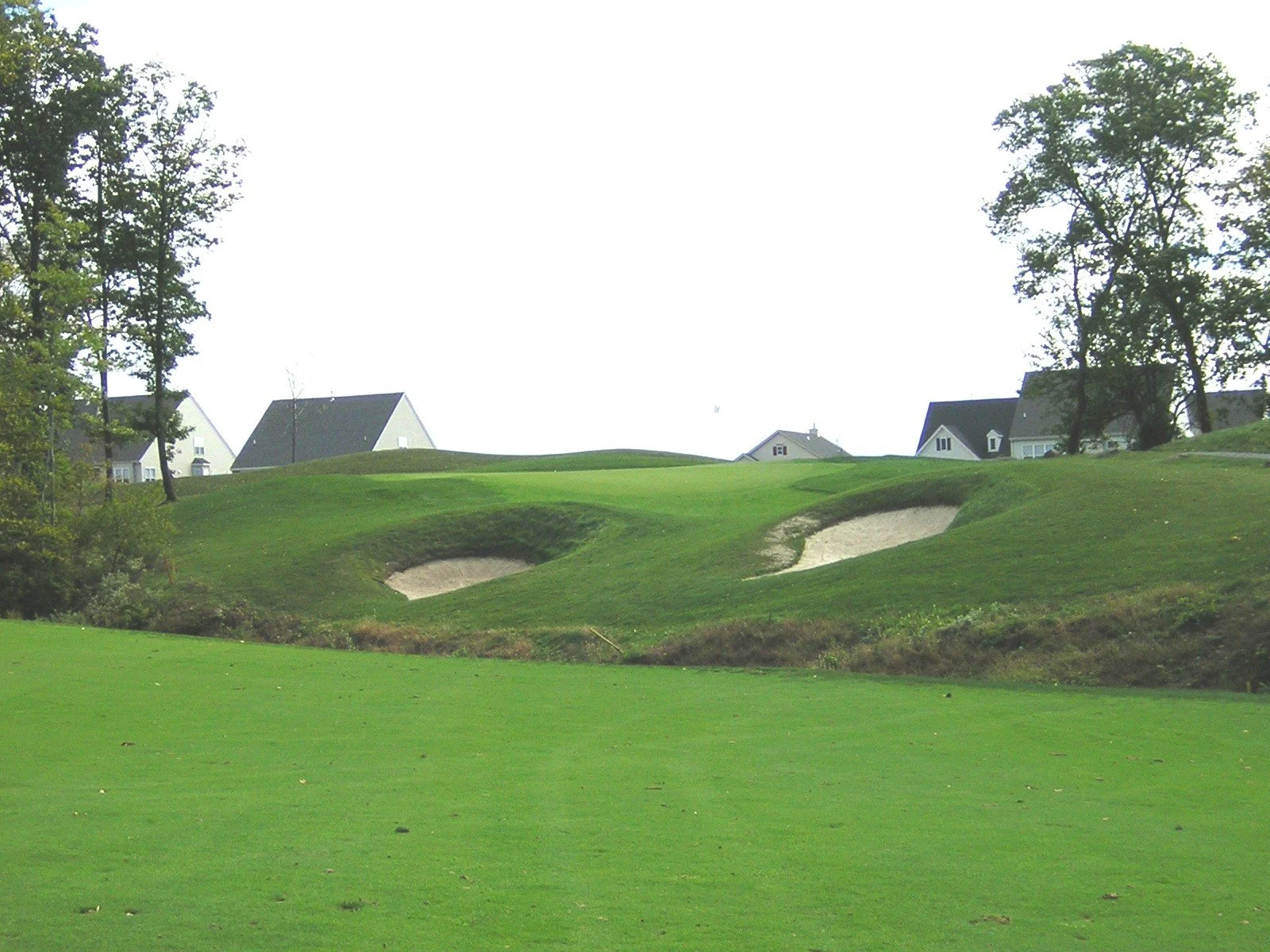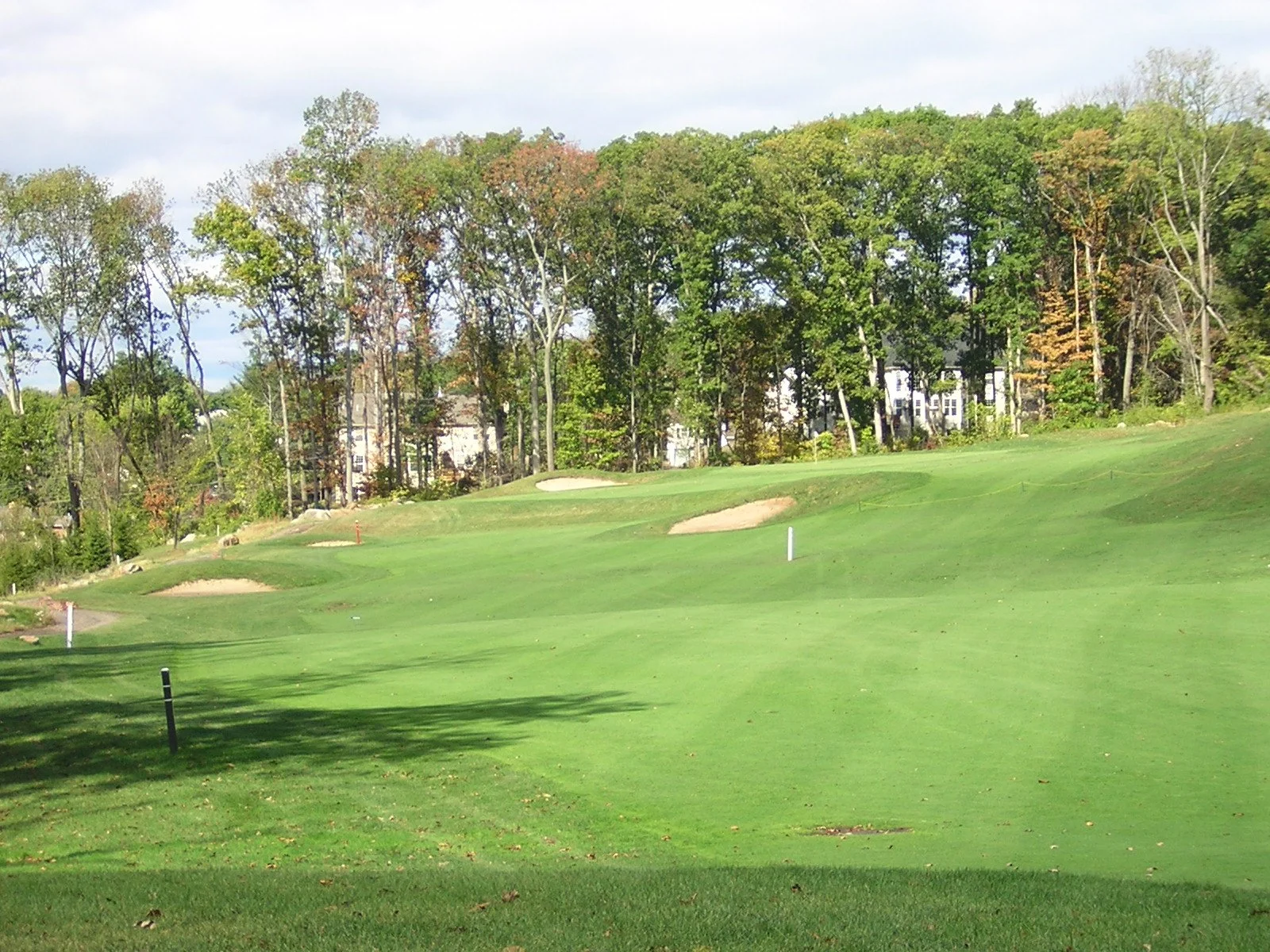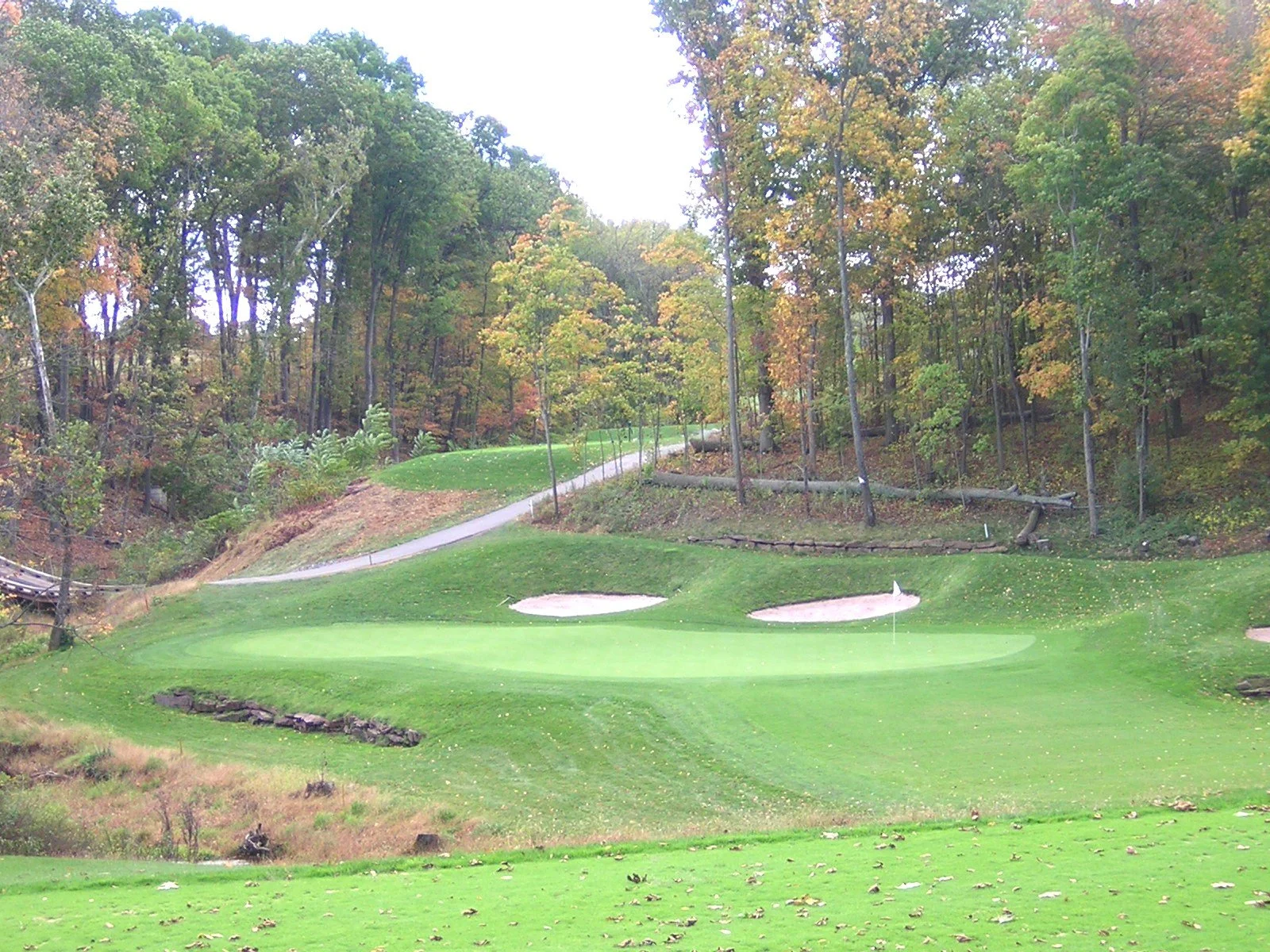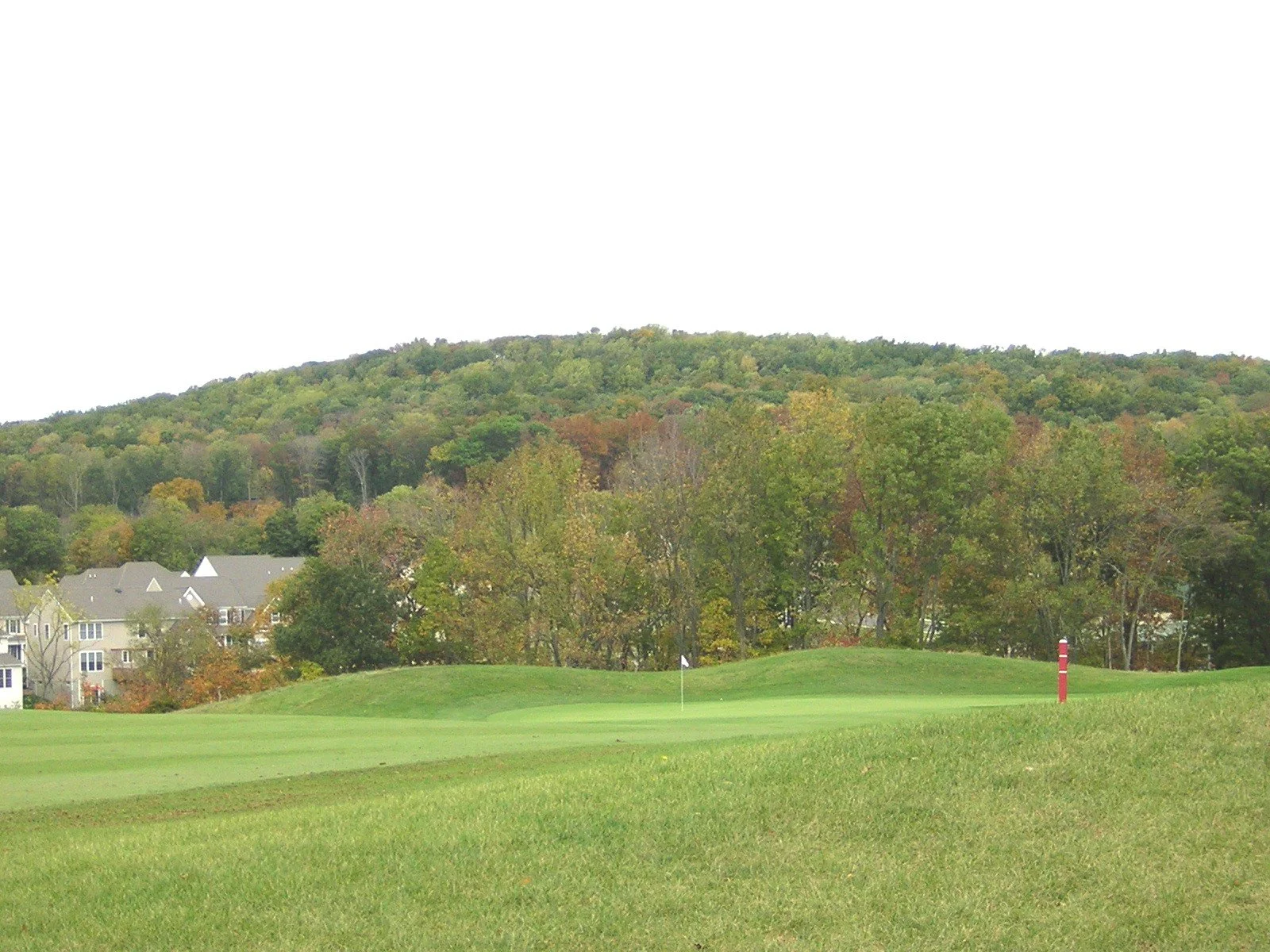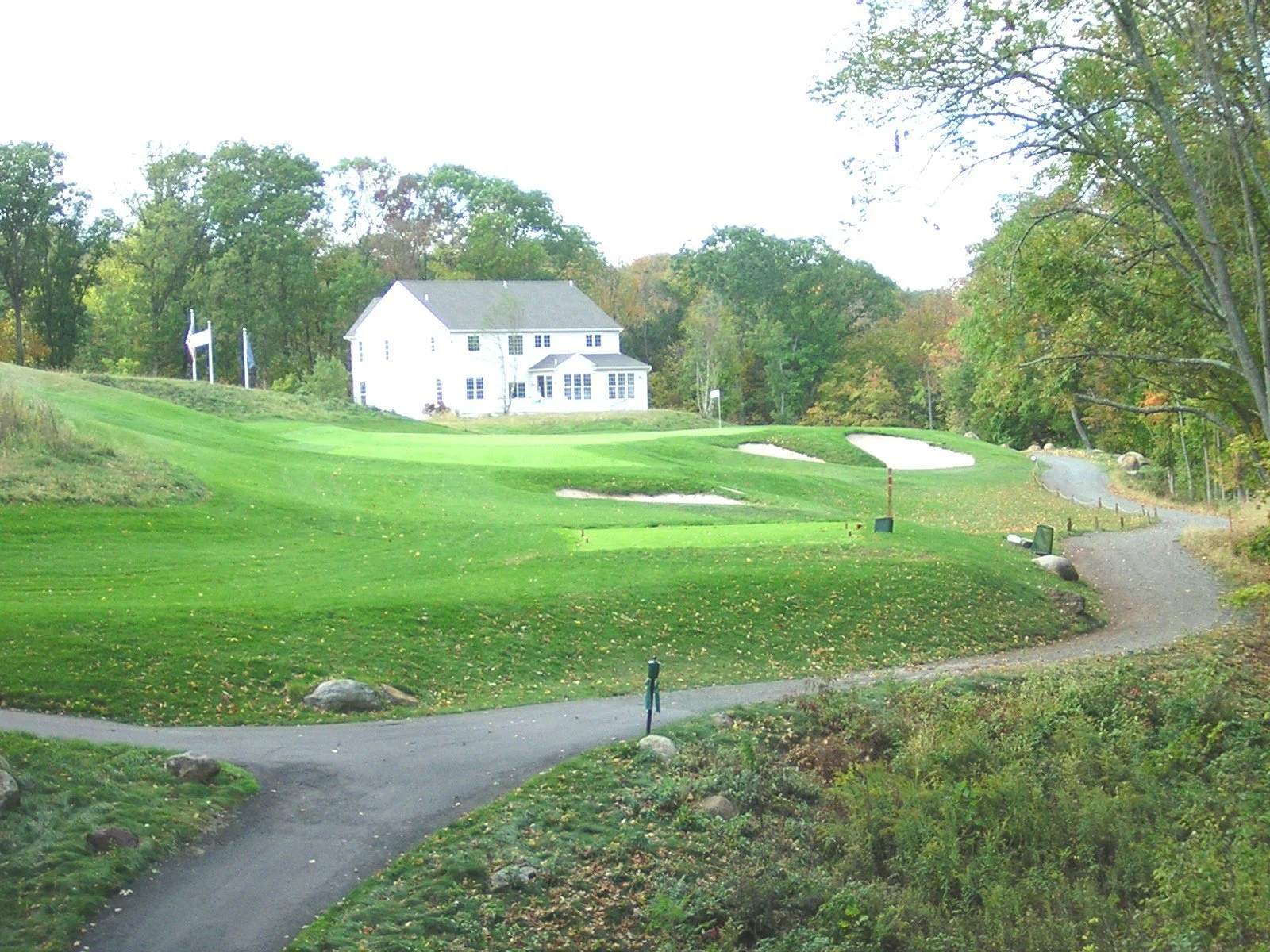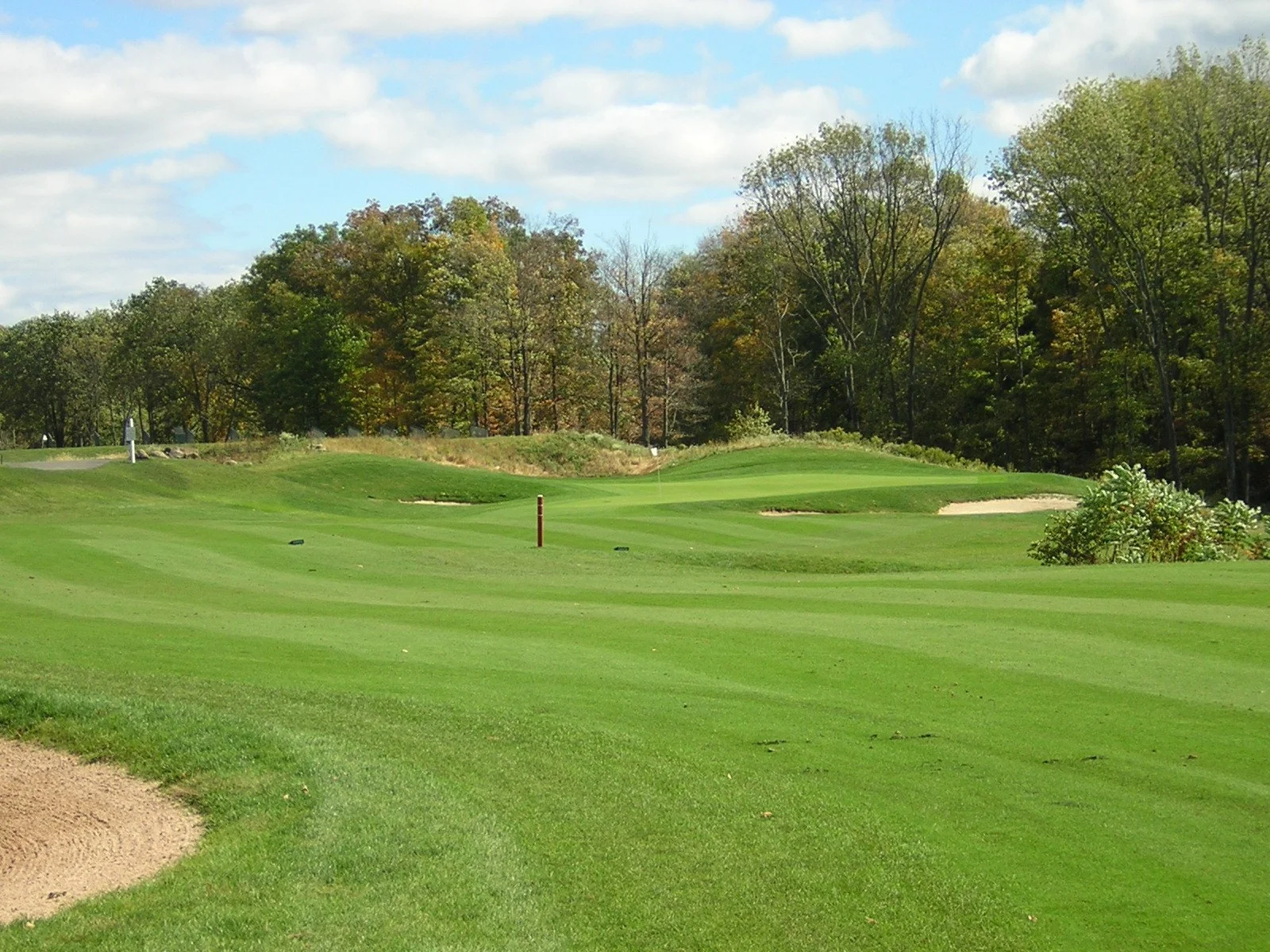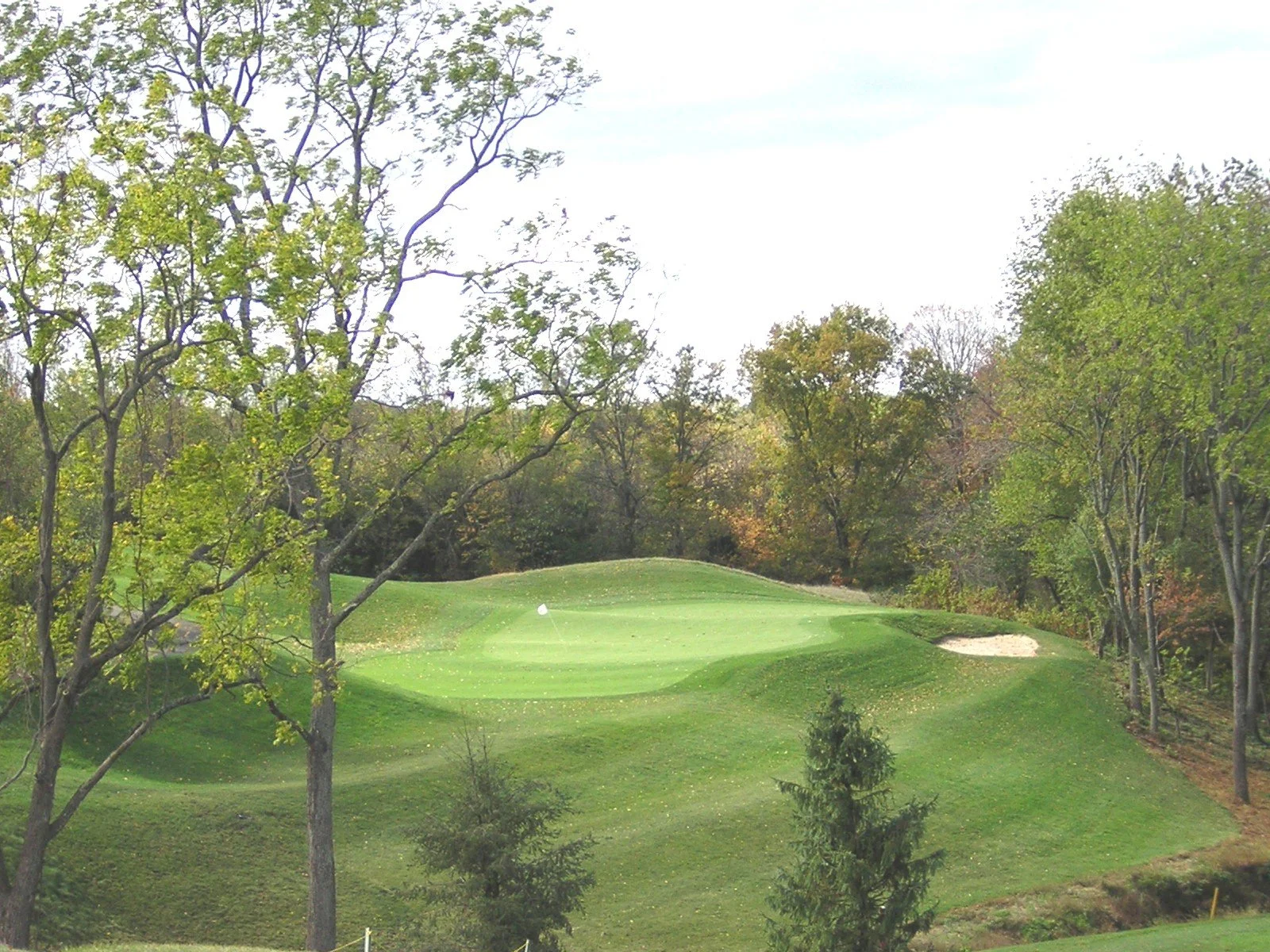RAVEN'S CLAW GOLF CLUB
Course Architect: Edward F. Shearon III
Year Opened: 2005
Location: Pottstown, Pennsylvania
Slope: 130. Rating: 71.0
Par: 71
Yardage: 6,740
Hole-by-Hole: 1 - Par 5 526 Yds 10 - Par 5 634 Yds
2 - Par 4 361 Yds 11 - Par 4 416 Yds
3 - Par 3 209 Yds 12 - Par 4 395 Yds
4 - Par 4 399 Yds 13 - Par 4 429 Yds
5 - Par 4 440 Yds 14 - Par 3 137 Yds
6 - Par 3 160 Yds 15 - Par 4 394 Yds
7 - Par 5 523 Yds 16 - Par 4 391 Yds
8 - Par 4 319 Yds 17 - Par 3 242 Yds
9 - Par 4 397 Yds 18 - Par 4 368 Yds
Par 36 3,334 Yds Par 35 3,406 Yds
Awards Won: Rated #9 Best State-by-State rankings (PA) by Golfweek (2007),
No. 8 Public Course in Pennsylvania by Golf Week (2006),
Best New Public Course nomination by Golf Digest (2006).
Websites: www.ravensclawgolfclub.com
HISTORY: The Philadelphia, Pennsylvania region is golf rich. Merion Golf Club, Philadelphia Country Club, Rolling Green Golf Club, Philadelphia Cricket Club and Huntingdon Valley Country Club to name a few.
However, in general, the masses are always looking for a few good public courses to tackle and at a reasonable price. Look no further, as Raven's Claw Golf Club is just a stones throw from the city of Brotherly Love.
Local architect Ed Shearon, who grew up in the area, was awarded the task of carving out a course suitable for all players. Shearon, who has crafted several courses in the region, has also done some wonderful renovation and redesign work on numerous Philadelphia classics, such as Merion (East and West), Whitemarsh Valley and Manufacturers.
The property, which covers 550 acres for a residential community and a golf course, is complete with elevation changes, rolling fields, tall stands of trees, marshes, ravines and creek beds. "It has beautiful bluffs and plateaus, indigenous woodland areas with 120-150 foot high trees and a couple of isolated wetland areas that we were able to incorporate into the design," commented Shearon. "We just had to fit the golf course into the natural features. We didn't move a lot of soil, we just placed it in the natural terrain."
The golf course, which sits on 186 acres, actually benefited from the housing project, from roads and bridges, to sewers and other elements totaling $18 million dollars, which would have been a tremendous out of pocket cost to the golf course. In return, the homeowner is quite happy with the natural beauty of the property, enhancing his land value, and the golfer is not charged exorbitant prices.
The putting surfaces feature many distinct quadrants, averaging around 6,000 square feet with each green boasting a championship pin position. The course also features 72 sand traps, each with a specific purpose. The course is certainly not a back-breaker at under 6,800 yards, as Shearon incorporated many design philosophies of the Philly gems into this design. "The old classic
Philadelphia golf courses had real balance to them. We did the exact same thing with this golf course. If I wanted to stretch it to 7,000 yards, I probably could, but then I would have had to change a lot of the topography and not utilize all the classic features."
Why the name Raven's Claw? It should be noted that before construction started, Shearon was walking the site and noticed a raven land on the branch of a dead tree, providing a spectacular view into the setting sun.
COURSE ANALYSIS: The course opens with a reachable, dogleg right par five just 526 yards in length. The real challenge is avoiding the trio of fairway bunkers down the left and the mounding and driving range on the right. The hole tightens as you close towards the green, that's protected on the left by a pair of bunkers and one on the right. The putting surface is one of the
smallest on the course at just 28 paces in length, but with a wedge in hand, birdie is certainly a possibility. By the way, the stone relic around the 100-yard marker on the right, part of the history of the property, dates back to before the Civil War. According to the scorecard, it does allow for relief without penalty if swing or line of flight is interfered with.
The first of eight par fours under 400 yards, the second is a definite birdie hole. The landing area is quite generous if you decide to lay back with a long iron or fairway metal. Three fairway bunkers will keep you honest and beware of the pond and waste area left, which will come into play if you're off your game. The green, just 24 yards in length, falls off hard on the left. Any balls off line will leave a difficult, uphill pitch to a fairly slick putting surface.
One of the many signature holes at Raven's Claw, the third is one of two 200-yard plus par threes. Playing over the corner of the pond, this beautiful one-shotter requires pinpoint accuracy, as sand right and deep and mounding in the rear can provide for plenty of headaches. Any shot missing to the right will filter down into a chipping area, sitting well below the hole. One final thought, beware of the back-left pin, which can be one of the hardest shots on the course.
Just a yard under 400, the fourth is a challenging, dogleg right par four. Large mounding down the right side blocks the view of the green, not to mention the two bunkers that reside in the side of the hill. The aggressive play down the right will leave just a short iron to the largest green on the course at 50 yards in depth. Sand left of the back-to-front putting surface can make for a difficult up and down.
Playing uphill from tee to green, the dogleg left, par four fifth is one of the most difficult holes on the course. At 440 yards from the black buttons, this is the longest par four at Raven's Claw. The pressure to hit the fairway is of the utmost importance, as thick rough left and sand right can make this a certain bogey hole. The putting surface slopes from right to left and could be quite difficult to read. Make par here and you've picked up one on your playing partners. Take a look back and you'll get a great view of the surrounding area and of course, the Limerick power plant towers.
The sixth is a fairly, straightforward par three, requiring just a short iron to a green guarded on either side by sand. The two-tiered putting surface can be extremely difficult, especially with a back-left pin. Stay below the hole for your best shot a two.
From an elevated tee, the seventh plays as a downhill, dogleg right par five, reachable in two, but be careful. The generous landing area does possess some intrigue when missed, as a large fairway bunker and out-of-bounds left make for a stressful tee ball. The right side is the best course of action, setting up your best shot at the green, however trees and wetlands can come into play. Two bunkers down the left side towards the green are great aiming points for a layup, which will leave just a short pitch to the fairly long putting surface. Missing this green long and left is a certain bogey. There's a reason this is the No. 1 handicap hole on the course.
In contrast, the eighth hole is as easy as it gets, but there's a catch. Your drive must clear a ravine to reach the wide landing area. A driver will leave next to nothing for your second, while a long iron or fairway metal sets up a 100-yard wedge. The putting surface angles to the right and is long and wide, so be precise with your approach or a three-putt is possible.
The closing hole on the outward nine is one of my favorites. From the tips, the dogleg right ninth forces the player to produce a big tee ball from the elevated markers. Trees guard the right side, while two bunkers on the left provide an excellent frame to the hole. The fairway sits well below the putting surface, so make sure you take an extra club or two to get home safely. The green is crowned in the front and guarded by two deep pot bunkers. Any shot just reaching the surface, will roll down into thick, gnarly rough or worse...sand. The promised land is long and narrow and rolls hard from back to front.
The back nine continues the stellar layout with the longest hole on the course, a monster par five stretching 634 yards. The rolling three-shotter plays uphill from the tee, then downhill towards the landing area and finally climbing once again to reach the green. The putting surface slopes from right to left and is guarded on the left by sand and a rugged, downhill escarpment. You'll need three precise shots to negotiate this beast and at all costs, avoid going left.
The 11th is aptly nicknamed the "Alps." One of the most sensational holes on the course, this mid-length par four requires two forced carries. First up, you'll need a three metal off the tee to reach the fairway, carrying the grassy ravine and avoiding the trees right. Enormous mounding left should steer off-line shots back towards the landing area. From the fairway, a mid-iron should suffice to carry the second abyss and reach the longest green on the course, a whopping 45 paces deep. The putting surface is very undulating, as it rises towards the back, making club selection very crucial. A bunker right, surrounding trees and well-positioned mounding provide a beautiful
amphitheater.
Another hole that requires a forced carry is the par-four 12th. One of eight par fours under 400 yards, the dogleg right No. 12 features an elevated tee that overlooks the fairly wide landing area. Beware however, as a menacing bunker lies center-cut in the fairway. After a successful tee ball, a short iron should remain to a two-tiered putting surface that slopes from back to front. One word of caution, do not miss long, as there is very little room for error.
Bending back to the left, the dogleg 13th reaches 429 yards from the tips. The landing area is guarded on the left corner by bunkers that must be avoided. The green is very receptive to your approach and devoid of sand. A big, sweeping draw off the tee will set up a short iron, so take advantage when you can, as the holes coming home have not let up.
One of the prettiest holes on the course, also happens to be the shortest at Raven's Claw, the 137-yard, par-three 14th. With tall trees standing watch overlooking the putting surface and two snake eye bunkers in the rear, this downhill one-shotter is a perfect example of why a par three does not need to be 225 yards long. A short iron should negotiate the length, however, a back-left pin to this very long, angled green can add 15-20 yards to your shot.
Although not the longest of par fours, the 15th is certainly one of the most difficult driving holes on the course. Trees and out of bounds right, more trees and thick rough left and a minuscule fairway playing uphill from tee to green can put fear in the eyes of the beholder. If you can, play out to the right to set up the best approach to the tightest green on the course, just 23 paces deep. Bunkers short and left see plenty of action, especially when the flag is tucked.
A bit of a reprieve when you reach the 16th, a par four that's just 391 yards long. The fairway is quite forgiving, particularly down the right. Some might choose a three-metal off the tee, however a big drive can leave just a short iron in, but it will bring in the two, left fairway bunkers. The putting surface is set down from the fairway, with a menacing trap on the right-front. The green is just 30 paces deep and very undulating with a ridge running from front to back. A pin in the right quadrant of the surface can prove to be very difficult.
If you thought 16 was a pushover, you'll find that the 17th will be just the opposite. At 242 yards from the elevated tips, this splendid par three is one of the longest in the state! For the big hitters, three-metal or hybrid, for the rest of us, grab the big stick and avoid the out of bounds down the entire right side. The slope of the land down the left is the side to come in from, as misfortune will be minimized. The putting surface is long and undulating with a U-shaped bunker covering the front-right. A par here will be like birdie anywhere else on the course. It's called "Calamity" for a reason.
The final chapter at Raven's Claw is a moderately-lengthened, but tight dogleg right par four. Out of bounds and homes flank the left and a hazard down the right, so fairway metal or long iron should be the play from the tee. Bunkers down the left should add to the incentive for a lesser club from the start. A short iron should remain to a well-guarded and three-tiered green. When the
flag is back, add two clubs to your approach. A classic finishing hole.
FINAL WORD: What makes a golf course playable and appealing? What do we look for when reviewing a course?
First of all, I look for how many types of golfers can play the course. Raven's Claw is a track that's attractive to any and all players. With five sets of tees ranging from 4,800 to 6,700 yards, Raven's Claw fits everyone's eye. Now you might be saying, well, it's only 6,740 yards from the tips, how can this layout test the best? Let me tell you, the yardage is quite deceiving, as many holes play uphill, have forced carries and, don't forget, the par is only 71. During a recent top amateur event, only one player was able to break par.
The wide selection of holes, from the minuscule 137-yard 14th to the massive 10th and the challenging fifth, the balance of holes at Raven's Claw is quite intriguing.
"Variety to me is the key to a successful golf course," mentioned Shearon.
Next up is conditioning. Granted, Raven's Claw is just a few years old, but the course is in wonderful shape. In fact, the course is now one of the official homes of the Montgomery County Amateur Championship and the accolades have already started piling in, as Raven's Claw was voted as one of the top-10 public courses in the state of Pennsylvania by Golfweek.
Amenities. How about a well appointed clubhouse overlooking the closing hole, complete with a full-service restaurant and a well-stocked pro shop.
Best of all, you don't need to break into your children's piggy bank to come out and play. Winter fees start at $25 and reach a high of $65 in the summer. Not bad for the golf-rich area of Philadelphia.
The housing development that winds throughout the golf course is set back as to not hinder play, but it is in plain view. The residential community is on the left side of the course, overlooking the venue and as Shearon stated, "most golfer's tend to slice to the right." The practice facility is adequate off to the right of the first hole and can come into play if you do miss starboard.
Raven's Claw Golf Club has become a local favorite in a very short period of time and with good reason - affordable golf, friendly staff and a wonderful and challenging layout. Look for RCGC to continue to turn heads in the years to come. I look forward to my return trip.
